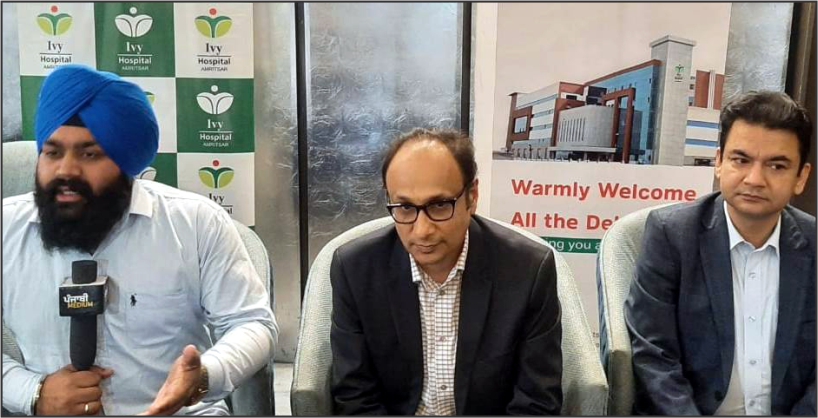Sleep – Disordered Breathing
The World Sleep Day is being celebrated this year on 17th March 2023 (Friday). This event has been organized annually by The World Sleep Society since 2008. The Theme for this year is “Sleep is Essential for Health”. Just as a nutritious diet and regular physical exercise are cornerstones of good health, sleep is vitally important to an individual’s physical and mental health. However, the importance of sleep for maintenance of good health is not usually considered. The World Sleep Day is meant to increase the awareness of the both the importance of sleep and also about the timely detection and management of sleep disorders.
Sleep – Disordered Breathing (SDB) includes a wide spectrum of sleep- related breathing disorders, including Obstructive Sleep Apnea (OSA), Central Sleep Apnea and sleep- related hypoventilation syndromes. OSA is the most common type of SDB.
Obstructive Sleep Apnea (OSA) is the pathological occurrence of recurrent episodes of either partial or complete cessation of airflow while breathing during sleep due to partial or complete pharyngeal airway obstruction. The occurrence of OSA along with overt symptoms like early morning fatigue and headache and increased daytime sleepiness is called Obstructive Sleep Apnea Syndrome (OSAS).
The global prevalence of OSA is estimated to be over 1 billion. In India, the prevalence is over 80 million, with over 30 million individuals having moderate and severe OSA. This disorder is frequently underdiagnosed and it has been estimated that over 80% of individuals with moderate and severe OSA remain undiagnosed. Population based studies have estimated the prevalence of OSA to be between 9- 13% and OSAS to be between 2.8- 3.5%. This further corroborates the challenges associated with diagnosis of OSA and OSAS as only one- third of the population with OSA have overt symptoms of sleep- disordered breathing.
The abnormal reduction in airflow while breathing during sleep due to obstruction of the pharyngeal airway causes fluctuations in the blood oxygen levels- this phenomenon is termed “Hypoxemia” and repeated episodes of interruptions of sleep termed “Sleep Fragmentation”.
This results in abnormal increase in the activity of the sympathetic nervous system and an imbalance in levels of various neuro humeral substances like Catecholamines, Angiotensin and Endothelin. This can result in systemic inflammation and metabolic dysfunction.
Early population-based studies had identified the relation between snoring and hypertension and also between snoring and Ischemic Heart Disease (IHD). Subsequently, numerous recent studies have confirmed the role of OSA as an important Modifiable Risk Factor for IHD.
Studies done among individuals diagnosed with IHD, estimate the prevalence of OSA to be between 50- 65%. It has also been found that there is a direct relationship between the severity of OSA and the risk of IHD. OSA is also associated with increased risk of heart failure and sudden cardiac death. Even among patients without IHD, the presence of OSA has been found to be associated with subclinical atherosclerosis and autonomic dysfunction. This autonomic dysfunction has been implicated in the development of hypertension.
As there is increasing evidence that the timely detection and treatment of OSA improves cardiovascular outcomes, recognizing and treating OSA becomes vital to reduce the disease burden of cardiovascular disorders.
OSA should be clinically suspected whenever any patient presents with daytime symptoms of early morning fatigue and headaches, increased daytime sleepiness and nocturnal symptoms of snoring and apneic episodes (episodes of breathing cessation during sleep), particularly in the presence of risk factors like obesity.
Increasing awareness about OSA has facilitated the development of various screening tools. The most important features of a clinically useful screening tool are its ease of usage and desired levels of sensitivity and specificity. The most commonly used screening tools for OSA include the STOP- BANG questionnaire and the Epworth Sleepiness Scale (ESS).
The STOP- BANG questionnaire consists of 8 questions with the STOP portion having 4 yes/ no self- answer questions assessing Snoring, Tiredness, Observed apneas and high blood Pressure. The BANG portion consists of 4 further observations with yes/ no answers consisting of BMI > 35 kg/ m2, Age > 50 years, Neck circumference > 40 cm and male Gender. Positive answers for any three out of the 8 parameters, indicates an increased risk of OSA.
Polysomnography (PSG) conducted in the Sleep Lab is the gold standard diagnostic modality. However, in patients in whom OSA is suspected with High Pre- Test Possibility of OSA (presence of risk factors for OSA), Home Sleep Apnea Testing (HSAT) is a reasonable alternative.
The goals of OSA Therapy are to resolve the symptoms of OSA and improve sleep quality. OSA should be approached as a chronic disease that requires long- term management. The potential benefits of treatment of OSA include decreased cardiovascular morbidity and mortality and resulting reduced healthcare utilization and expenditure.
Patient education about the risk factors and consequences of OSA is vital. Patients must be counselled to avoid activities that require alertness and vigilance like driving, if sleepy. Weight loss and exercise should be recommended to all patients who are obese. All patients must be advised that alcohol and medications like opioids, may worsen OSA.
All patients diagnosed with OSA, should be offered Positive Airway Pressure (PAP) Therapy. In patients with mild OSA, who prefer not to use PAP therapy, oral appliances are an alternative therapy that have been shown to improve the symptoms of OSA. Upper airway surgery is the definitive treatment in those patients with surgically correctable, obstructing lesions in the upper airway.
Dr V Keshavan
Senior Consultant Pulmonologist, Apollo Hospitals, Hyderaguda.
For More information please contact: 9959154371 / 9963980259.

















